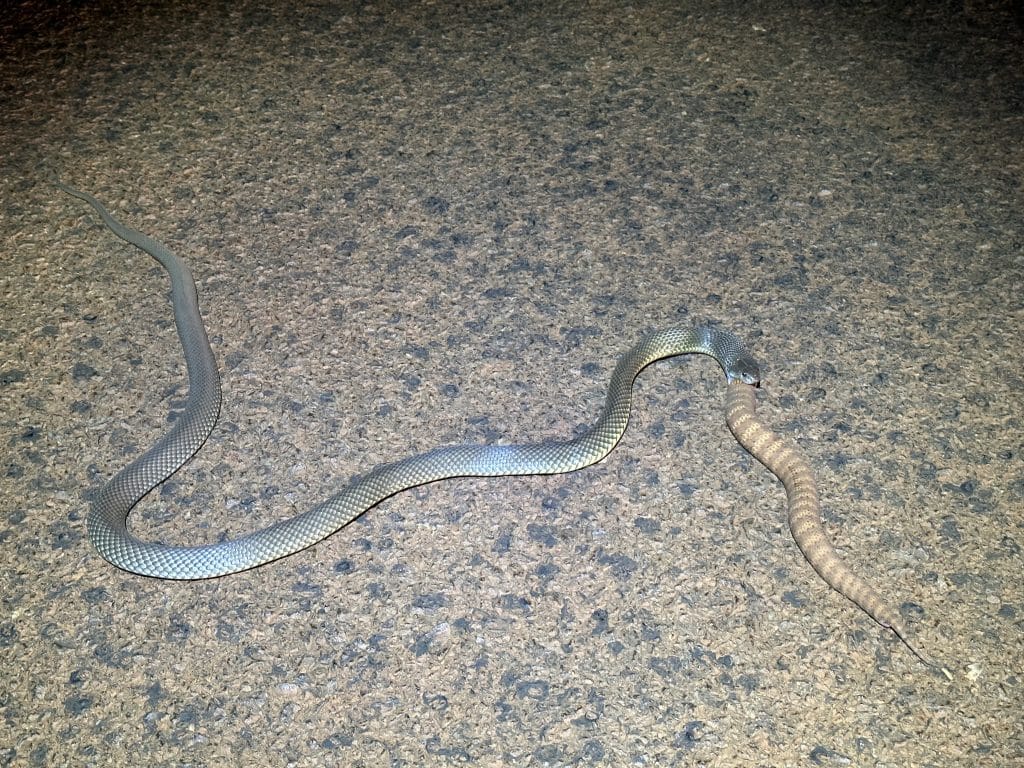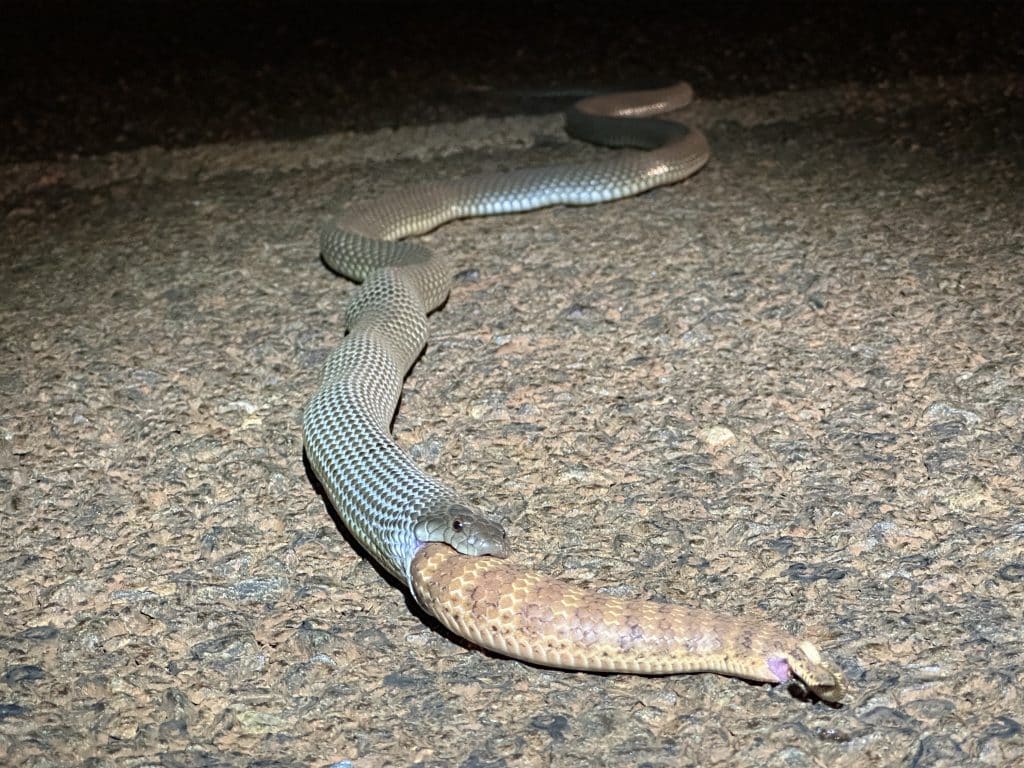More than 200 people converged on Walpole at the end of September, with one common goal – to capture a snapshot of the plant and animal life hidden in the nooks and crannies of the Walpole Wilderness Area, the only gazetted wilderness in Western Australia.

On the dark warmth of a quiet stretch of bitumen, a long streak of pale-brown snake works its jaws methodically over a thick legless body, banded, like the landscape around it, in the colours of red dust and ironstone.
The long streak is a mulga snake (Pseudechis australis, also known as a king brown snake) sometimes described as the ‘heavy weight of the outback’. The banded body belongs to a Pilbara death adder (Acanthophis wellsi), known to be ‘dangerously’ venomous.
Snakes – even highly venomous ones – are known to be an important part of the mulga snake’s diet. In 2007, nine mature woma (Aspidites ramsayi), an endangered species of python, were reintroduced to Arid Recovery Reserve in South Australia. All were dead within four months, with mulga snakes implicated in all of their deaths.
But observing a mulga snake devour another snake is an event that is rarely seen, let alone photographed and filmed, says Biologic principal zoologist Tom Rasmussen. Biologic captured the footage during a recent fauna survey in the eastern Pilbara.
An average mulga snake is around two metres long, and it uses brute force – as well as its ability to inject up to 150 milligrams of venom in each bite – to overcome its prey. Apart from death adders, mulga snakes are known to eat the highly venomous western brown snake (Pseudonaja nuchalis). Scientists believe that mulga snakes have developed an immunity to the venom of brown snakes, as well as that of other mulga snakes.
There’s at least one toxin that the mulga snake is not immune to: the poison released from the glands of introduced cane toads (Rhinella marina). Cane toads are yet to invade the Pilbara, and so it remains a place where the mulga snake is the heavy-weight title holder of the venomous snake world.




